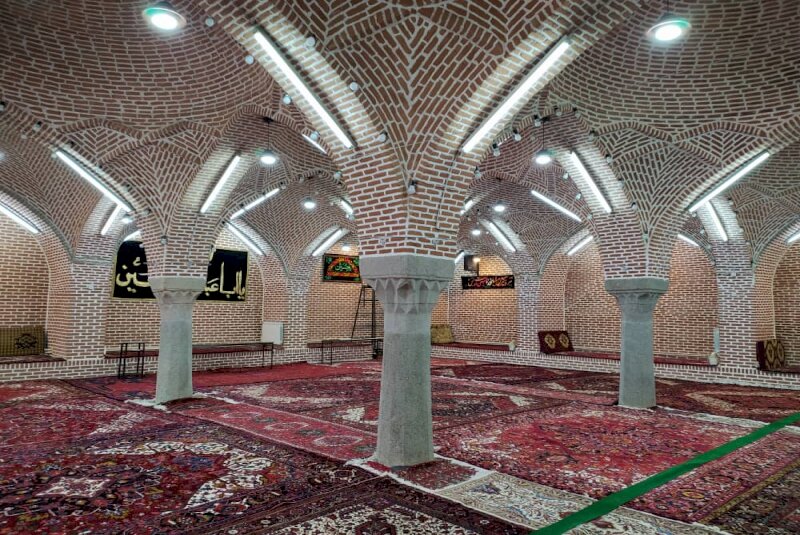Qajar-era mosque in Tabriz being restored to former glory

TEHRAN - A restoration work has been commenced on the Qajar-era (1789–1925) Khalkhali mosque, which is located in the UNESCO-registered bazaar of Tabriz, the capital of East Azarbaijan province, the director of the World Heritage site has said.
Besides several passages and shops, there are several aging mosques, dating back to different historical eras, inside Tabriz historic bazaar complex, some of which need restoration, CHTN quoted Hossein Esmaeili as saying on Saturday.
The restoration project involves repairing damaged parts, flooring, and organizing the mosque with the aim of better preservation, the official added.
Tabriz Historic Bazaar Complex has been a UNESCO World Heritage site since 2010 and was mentioned by Marco Polo when he traveled the Silk Road in the Middle Ages.
A jumble of interconnected covered passages that stretches for about 5 km, the bazaar has been a melting pot of cultural exchange since antiquity. It embraces countless shops, over 20 caravanserais and inns, some 20 vast domed halls, bathhouses, and mosques, as well as other brick structures and enclosed spaces for different functions. Its history dates back to over a millennium, however, the majority of fine brick vaults that capture most visitor’s eyes date from the 15th century.
Most mazes and passages offer certain commodities such as carpets, metalwork, toys, clothing, jewelry, and kitchen appliances, traditional spices, herbal remedies, and natural perfumes. One can also bump into colorful grocery stores, bookbinders, blacksmiths, tinsmiths, coppersmiths, tobacconists, tailors, flag sellers, broadcloth sellers, carpenters, shoemakers, and knife-makers.
Several divided carpet sections across the bazaar enable visitors to watch or buy hand-woven Persian carpets and rugs with different knot densities and other features. The bazaar was also well-known and prosperous during the 13th century when Tabriz became the capital of the Safavid Dynasty (1501–1736).
The city lost its status as capital in the 16th century but remained important as a commercial hub until the end of the 18th century, with the expansion of Ottoman power. It is one of the most complete examples of the traditional commercial and cultural system of Iran.
By the way, the city distanced its heyday as the capital was transferred eastward to Qazvin in the 16th century, but the bazaar remained vital as a commercial hub more or less.
ABU/AFM
